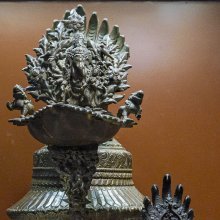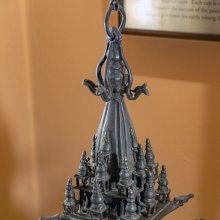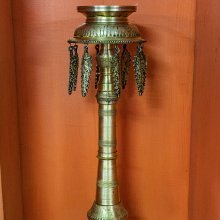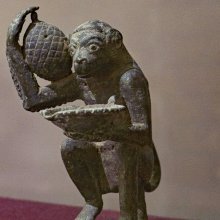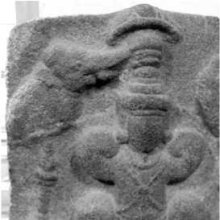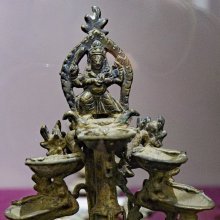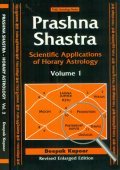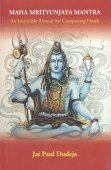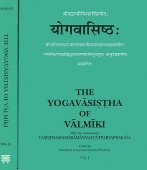Lamp: 6 definitions
Introduction:
Lamp means something in Hinduism, Sanskrit, Jainism, Prakrit, the history of ancient India, Hindi, biology. If you want to know the exact meaning, history, etymology or English translation of this term then check out the descriptions on this page. Add your comment or reference to a book if you want to contribute to this summary article.
Images (photo gallery)
(+25 more images available)
In Hinduism
Natyashastra (theatrics and dramaturgy)
Source: Shodhganga: Elements of Art and Architecture in the Trtiyakhanda of the Visnudharmottarapurana (natya)Lamps are associated with Tripatāka-hasta: one of the twenty-two Single-hand Gestures (in Indian Dramas) (known as asaṃyuktahastas), according to the Viṣṇudharmottarapurāṇa, an ancient Sanskrit text which (being encyclopedic in nature) deals with a variety of cultural topics such as arts, architecture, music, grammar and astronomy.—According to the Abhinayadarpaṇa, the tripatāka hand is used to denote some objects like crown, arrows, tree, the ketakī flower, lamp etc. This hand posture shows the action of writing letters. Indra along with his weapon i.e., vajra, is also shown with this hand posture in Dance.

Natyashastra (नाट्यशास्त्र, nāṭyaśāstra) refers to both the ancient Indian tradition (shastra) of performing arts, (natya—theatrics, drama, dance, music), as well as the name of a Sanskrit work dealing with these subjects. It also teaches the rules for composing Dramatic plays (nataka), construction and performance of Theater, and Poetic works (kavya).
Yoga (school of philosophy)
Source: ORA: Amanaska (king of all yogas): A Critical Edition and Annotated Translation by Jason BirchLamps are denoted by the Sanskrit term Dīpa, according to the Yogatārāvalī: a short Yoga text of twenty-nine verses presenting Haṭhayoga as the means to Rājayoga (i.e., Samādhi).—Accordingly, while describing the no-mind state: “When the movement of the breath is quashed through the prolonged restraint of the mind and senses, the bodies of the best Yogins become still like a lamp (dīpa) in a windless place and their minds are immersed in the no-mind [state]”.

Yoga is originally considered a branch of Hindu philosophy (astika), but both ancient and modern Yoga combine the physical, mental and spiritual. Yoga teaches various physical techniques also known as āsanas (postures), used for various purposes (eg., meditation, contemplation, relaxation).
In Jainism
General definition (in Jainism)
Source: The University of Sydney: A study of the Twelve ReflectionsLamps symbolically refers to knowledge, as discussed in Bhūdhardās’s composition dealing with the twelve reflections (bhāvanā or anuprekṣā), also found in the Tattvārtha-sūtra.—Accordingly, “[...] [the influx of karma]—Residents of the world wander forever in the sway of a delusional dream. On all sides the thieves of karma loot everyone but we pay no attention. (7) [blocking the influx of karma]—The true guru wakes us up when we are under the influence of the delusional dream. We can take his aid and stop the karma thieves. (8) The lamp of knowledge is full of the oil of asceticism. Study your home and put aside wandering. Thieves have already broken in, you can’t expel them without the rituals. (9) [...]”.

Jainism is an Indian religion of Dharma whose doctrine revolves around harmlessness (ahimsa) towards every living being. The two major branches (Digambara and Svetambara) of Jainism stimulate self-control (or, shramana, ‘self-reliance’) and spiritual development through a path of peace for the soul to progess to the ultimate goal.
India history and geography
Source: Singhi Jain Series: Ratnaprabha-suri’s Kuvalayamala-katha (history)Lamps were lit, as part of the tasks performed to beautify the Sleeping chamber (of young ladies) in Ancient India, as depicted in the Kathās (narrative poems) such as Uddyotanasūri in his 8th-century Kuvalayamālā (a Prakrit Campū, similar to Kāvya poetry).—The Kuvalayamala (779 A.D.) is full of cultural material which gains in value because of the firm date of its composition. [...] Page 83.3-9: Here is the description of the house or the sleeping chambers of young ladies which were beautified for the reception of their husbands. The select items in this list are as follows: [e.g., lighting of lamps;] [...]

The history of India traces the identification of countries, villages, towns and other regions of India, as well as mythology, zoology, royal dynasties, rulers, tribes, local festivities and traditions and regional languages. Ancient India enjoyed religious freedom and encourages the path of Dharma, a concept common to Buddhism, Hinduism, and Jainism.
Biology (plants and animals)
Source: Google Books: CRC World Dictionary (Regional names)1) Lamp in India is the name of a plant defined with Aristida depressa in various botanical sources. This page contains potential references in Ayurveda, modern medicine, and other folk traditions or local practices.
2) Lamp is also identified with Heteropogon contortus It has the synonym Sorghum contortum (L.) Kuntze (etc.).
Example references for further research on medicinal uses or toxicity (see latin names for full list):
· Acta Botanica Indica (1990)
· Proceedings of the Indian National Science Academy. Part B, Biological Sciences (1985)
· Bol. Soc. Argent. Bot. (1968)
· Journal of Cytology and Genetics (1985)
· Obs. Bot. (1786)
· Revised Handbook to the Flora of Ceylon (1931)
If you are looking for specific details regarding Lamp, for example chemical composition, health benefits, pregnancy safety, extract dosage, diet and recipes, side effects, have a look at these references.

This sections includes definitions from the five kingdoms of living things: Animals, Plants, Fungi, Protists and Monera. It will include both the official binomial nomenclature (scientific names usually in Latin) as well as regional spellings and variants.
Languages of India and abroad
Hindi dictionary
Source: DDSA: A practical Hindi-English dictionaryLamp in Hindi refers in English to:—(nm) lamp..—lamp (लैंप) is alternatively transliterated as Laiṃpa.
...
See also (Relevant definitions)
Starts with (+34): Lamp and shade, Lampa, Lampada, Lampadi, Lampaga, Lampaka, Lampakaki, Lampakara, Lampaki, Lampala, Lampalike, Lampamberu, Lampana, Lampanagara, Lampaparna, Lampapataha, Lampar, Lampasara, Lampasu, Lampat.
Ends with: Dim lamp, Golden lamp, Lutio-lamp, Malarkulamp, Otikulamp, Paccakkulamp, Pulinkulamp.
Full-text (+1199): Dipa, Pradipa, Dipaka, Nirajana, Dipakitta, Dipamala, Dipika, Snehapriya, Snehasha, Ciraga, Divali, Samai, Diparati, Arati, Shikhavat, Sodaru, Mahaprabha, Dipadhvaja, Nirajisu, Varti.
Relevant text
Search found 303 books and stories containing Lamp; (plurals include: Lamps). You can also click to the full overview containing English textual excerpts. Below are direct links for the most relevant articles:
The Skanda Purana (by G. V. Tagare)
Chapter 7 - Special Efficacy of the Gift of Lamps < [Section 4 - Kārttikamāsa-māhātmya]
Chapter 9 - Rites to be Performed on Vatsadvādaśī, [...] Dīpāvalī < [Section 4 - Kārttikamāsa-māhātmya]
Chapter 8 - The Greatness of Tulasī < [Section 5 - Mārgaśīrṣa-māhātmya]
Parables of Rama (by Swami Rama Tirtha)
Story 66 - The Final Stage of Love, "I am He" < [Chapter IX - Love]
Story 220 - The example of a lamp. < [Chapter XLI - Purity]
Story 77 - A Logical Fallacy < [Chapter X - Maya]
A Light was Lit < [August 1948]
A Poet’s Host < [January – March, 2001]
Arts and Crafts of Temple Campus < [October – December, 1988]
Abhidhamma in Daily Life (by Ashin Janakabhivamsa) (by Ashin Janakabhivamsa)
Domain 6 - Patti-dana (sharing of merit) < [Chapter 6 - Ten domains of meritorious actions (ten punna kiriyavatthu)]
Cause 2 - Death Due To Cessation Of Kamma Forces < [Part 1 - The Four Causes Of Death]
Part 1 - The Four Causes Of Death < [Chapter 8 - What happen when death draws near (mind processes immediately preceding death)]
The Agni Purana (by N. Gangadharan)
Chapter 200 - Vow of giving a gift of lamp (dīpa-dāna-vrata)
Chapter 202 - Different flowers used in Worship (puṣpa-adhyāya)
Chapter 299 - Recipes for the diseases of infants (bālatantra)
Temples of Munnur (Historical Study) (by R. Muthuraman)
Livestock and Cattle donations < [Chapter 3]
Ammaiyappan Sri Pallavandon Rajanarayana Sambuvarayan < [Chapter 1]
Rajaraja III (A.D.1218-1256 A.D.) < [Chapter 1]
Related products
